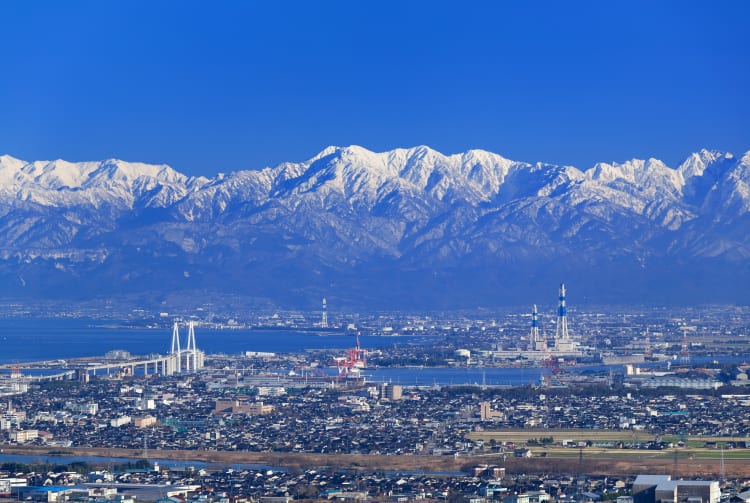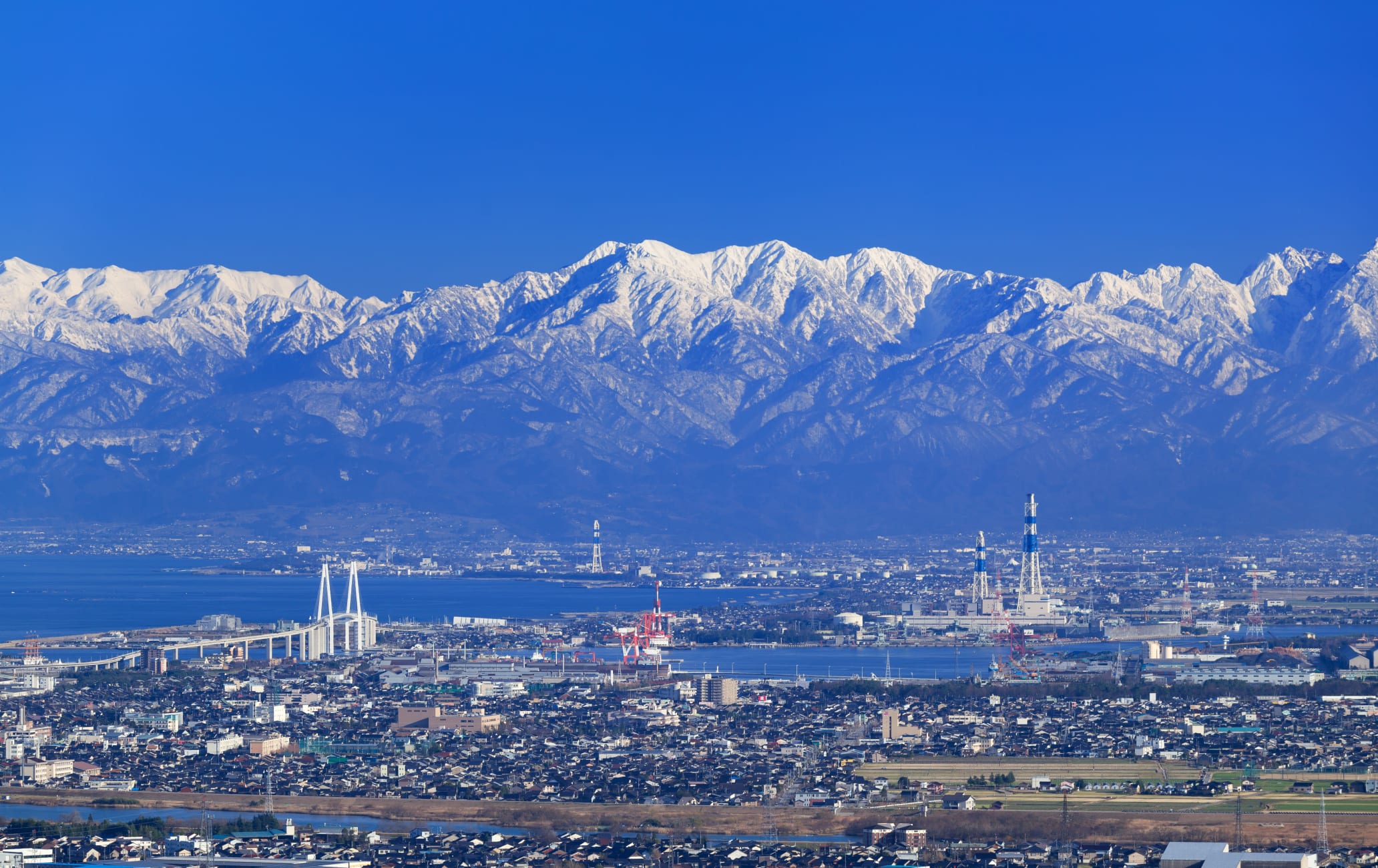A majestic mountain range
As the two major peaks in the Tateyama Mountain Range, Tateyama and Tsurugi form a magnificent backdrop to the east of Toyama Prefecture .
Stretching out like a jagged saw blade, the Tateyama Mountain Range can be climbed by travelers with the mettle to take them on.

Don't Miss
- The famed mountain shrine of Oyama atop Tateyama
- A two day trek to the peak of the legendary Mt. Tsurugi
- An epic week-long trek from Tateyama to Kamikochi—Japan's most celebrated mountain course
How to Get There
Most people access the major Tateyama peaks from Murodo via the Tateyama Kurobe Alpine Route. You can embark from either side of the route, with Tateyama Station on the Toyama side or Ogizawa (Omachi City) in neighboring Nagano Prefecture.
From Toyama, travel from Toyama Densetsu to Tateyama Station. From Omachi station, go to Ogizawa Station then proceed to Murodo via the Alpine Route.
Geography
The northernmost section of Japan's Hida Mountain Range (or “Northern Japan Alps”) forks into two segments with the Kurobe Dam in the valley between them.
To the east, The Ushiro Tateyama Mountain Range borders Nagano Prefecture and is home to the famous ski resorts of Hakuba. To the west, the Tateyama Mountain Range is entirely in Toyama and more central to the prefecture's identity.
By far the most visually distinctive of the peaks, Tsurugi sits regally in the center like a rugged jewel in a crown. Just south of Tsurugi, the gentler contours of Tateyama belie the fact that it's actually the taller of the two. As major peaks in the Hida Mountains, Tateyama and Tsurugi also rank among the highlights of the Chubu Sangaku National Park.
Toyama's holy mountain
Though usually spoken of as a single mountain, Tateyama actually has three peaks, with the best-known (Oyama) being only the second highest. Together with mountains Fuji and Hakusan, Tateyama claims the title of one of the country's Three Holy Mountains.
Legend has it that an eighth-century hunter pursued a wounded bear all the way to Murodo only to see it transform into a golden Buddha. Thereafter, the hunter became a priest, tasked with tending to this new sacred place. Nowadays, the mountaintop shrine of Oyama is one of the mountain's main attractions.
The convenient location and relatively easy ascent makes Tateyama very popular during the warmer months. You may find that crowds are a greater obstacle to reaching the top than any difficulty in the course. So consider bunking down at a mountain lodge or hotel to break up your journey and ease tired muscles. Theoretically, you can do it as a day trip, but timing might be tight.
The big one
Tsurugi was the last major peak in Japan to be summited. It took until the year 1906 for officials from Japan's Land Survey Department to reach the top with many failed attempts which added to the mountain's aura of danger.
They had believed themselves en route to the first successful ascent, but on reaching the summit discovered a sword and staff dating from before the 12th century. The mystery of how these items got there remains unsolved.
Tateyama is a significantly easier mountain to climb than Mt. Tsurugi. It avoids the tag of 'technical climbing,' but only by having a well-maintained network of chains and ladders reducing the need for ropes and other climbing gear. Even with a sturdy chain to grasp, you'll still find yourself negotiating exposed ridges with sheer drops below.
Most attempts to climb Tsurugi begin at Murodo where you can set off on foot for the Kenzanso Mountain Lodge. This facility, which operates from July to mid-October, is the ideal stop off point for a 10 to 12 hour hike. If you get an early start (say 4:30 a.m.), you can make it back to Murodo that afternoon to catch the last bus back to civilization.
Tateyama to Kamikochi
The six to seven day hike from Tateyama to Kamikochi (or the reverse) is one of Japan's premier treks.
After alighting from Murodo, head east to Mt. Tateyama and beyond. From there, the basic breakdown of the hike is as follows:
Day One: Murodo to Goshikigahara, six to seven hours, and you can climb Mt. Tateyama along the way if the weather cooperates.
Day Two: Goshikigahara to Yakushidake Sanso, eight to 10 hours via another famous mountain, Yakushidake.
Day Three: Yakushidake Sanso to Kurobegoro Goya, six to eight hours, includes yet another famous mountain, Kurobegorodake.
Day Four: Kurobegoro Goya to Mt. Yarigatake, eight to 10 hours, ending at another iconic Japanese peak.
Days Five and Six: Mt. Yarigatake to the Hotakadake Sanso to Kamikochi, 11 to 15 hours, the single most vaunted multi-peak excursion in Japan. Beginners beware! Things do get genuinely dangerous on the Daikiretto Traverse.
When to go
All of these hikes share the same July to early October window. Experienced, well-equipped hikers may opt to climb Tateyama as early as late April, after the Alpine Route has opened. Crampons are required gear, ice axes are recommended, and don't skimp on the cold weather wear. Casual hikers should plan a hike for July to mid-October.
Tsurugi follows the same rules as Tateyama with the caveat that early-spring hiking is much more dangerous on the more difficult mountain.
For the Tateyama to Kamikochi hike, mid-July to early October is best. Earlier in the season, residual snow presents problems for the lightly-equipped and some huts will not be open, discouraging amateur hikers.
























































